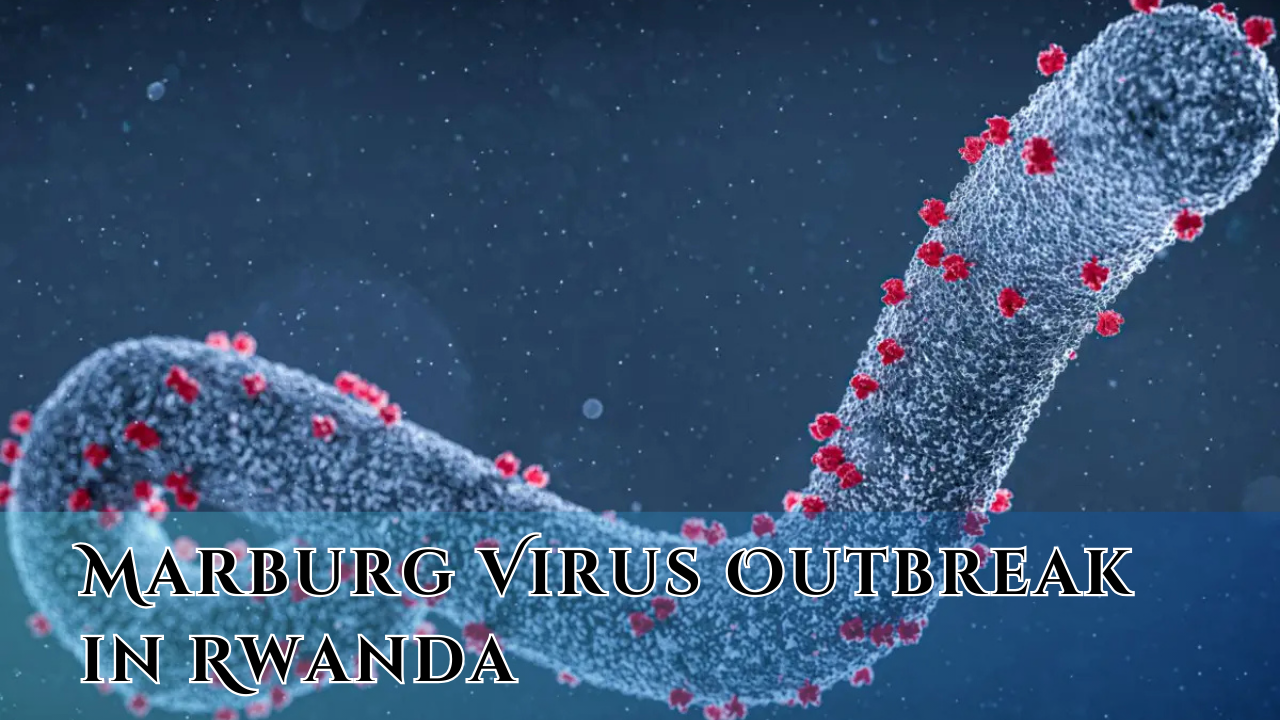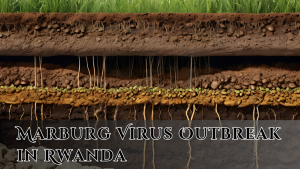Marburg Virus Outbreak in Rwanda
Context:
Rwanda is facing a critical public health crisis as the Marburg virus outbreak escalates, following the country’s first reported case late last month.

More on News:
- With at least 46 individuals infected and 12 confirmed deaths, the situation is particularly alarming for a nation with a fragile healthcare system, characterised by only 1,500 doctors serving a population of over 13 million.
- Rwanda’s Health Minister has announced efforts to secure experimental vaccines and treatments, focusing on candidate drugs in clinical trials.
- The US-based Sabin Vaccine Institute has provided 700 doses of an experimental Marburg vaccine, which will be administered to frontline healthcare workers to help curb the outbreak.
About Marburg virus disease (MVD):
- Marburg virus is one of the deadliest pathogens known, with case fatality rates ranging from 24% to 88%, depending on the strain and case management.
- Marburg is part of the filovirus family, which also includes Ebola, and both viruses are clinically similar, capable of causing outbreaks with high mortality rates.
- Historical Context: The first outbreak occurred in Marburg, Germany, in 1967, with subsequent cases primarily in Africa.
- Transmission: Historically, human infections stemmed from prolonged exposure to mines or caves inhabited by Rousettus bats, particularly the Egyptian fruit bat.
- Human-to-Human Transmission: According to the WHO, Marburg spreads directly (through contact with bodily fluids of infected individuals) and indirectly (via contaminated surfaces, materials, and objects).
- Medical workers are particularly vulnerable during outbreaks due to inadequate infection control.
- Symptoms: Can appear 2 to 21 days after infection, starting with high fever, severe headache, muscle ache, watery diarrhoea, abdominal pain, and vomiting.
- Severe Symptoms: Many patients develop haemorrhagic symptoms, leading to significant bleeding from various sites, including the digestive system, nose, gums, and vagina.
- Haemorrhage is the primary cause of death in fatal cases, which often occurs 8 to 9 days after symptoms begin due to severe blood loss and shock.
- Severe Symptoms: Many patients develop haemorrhagic symptoms, leading to significant bleeding from various sites, including the digestive system, nose, gums, and vagina.
- Prevention and Treatment: Currently, there are no vaccines or specific treatments for MVD.
- Supportive Care: Rehydration (oral or intravenous) and symptom management improve survival rates.
- Diagnosis Challenges: Clinically distinguishing Marburg virus disease from other infectious diseases such as malaria, typhoid fever, shigellosis, meningitis, and other viral hemorrhagic fevers can be difficult.
- Safety Considerations: Samples collected from patients pose a high biohazard risk. Testing on non-inactivated samples must be conducted under maximum biological containment conditions.
- All biological specimens must be packaged using a triple packaging system for safe transport, both nationally and internationally.
Historical Context
- Previous Outbreaks: The Marburg virus has caused several deadly outbreaks in Africa, including notable outbreaks in Equatorial Guinea and Tanzania in 2023, and earlier outbreaks in Angola (2004-2005) and the Democratic Republic of Congo (1998-2000).
- Global Risk Assessment: The US’s Centers for Disease Control and Prevention (CDC) has assessed the risk to Americans as low, despite the outbreak’s severity in Africa.
Marburg virus disease (MVD) is a severe and often fatal illness caused by the Marburg virus, a member of the Filoviridae family. This rare but highly contagious disease can cause hemorrhagic fever in humans and non-human primates, with a case fatality rate ranging from 24% to 88% in past outbreaks.
Transmission and Spread
The Marburg virus is primarily transmitted to humans from fruit bats, specifically the Egyptian rousette bat (Rousettus aegyptiacus). Once introduced into the human population, the virus can spread through:
- Direct contact with bodily fluids of infected individuals
- Contact with contaminated surfaces or materials
- Unprotected sex with a recovered patient (up to seven weeks after recovery)
subscribe to our Youtube Channel for more Valuable Content – TheStudyias
Download the App to Subscribe to our Courses – Thestudyias
The Source’s Authority and Ownership of the Article is Claimed By THE STUDY IAS BY MANIKANT SINGH





